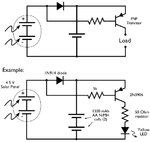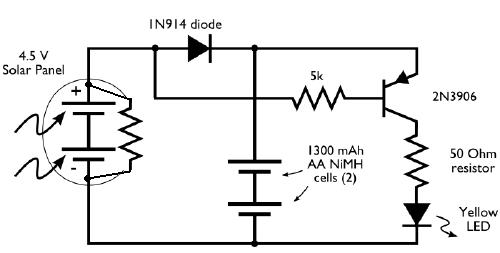zartoop
Newbie level 3
I have built the circuit below but cannot get the led to light at all. The circuit is meant to to detect light and dark (via the solar cell) and turn on the led when it is dark. Also the solar panel is meant to charge the battery. The circuit is from Evil Mad Scientist.
I have used a PN200 transistor and breadboarded it. Checked and double checked everything but for the life of me can't get it to work. Please help.
Can someone please explain the details of operation for me?
Thank you for helping a dummy.

I have used a PN200 transistor and breadboarded it. Checked and double checked everything but for the life of me can't get it to work. Please help.
Can someone please explain the details of operation for me?
Thank you for helping a dummy.

